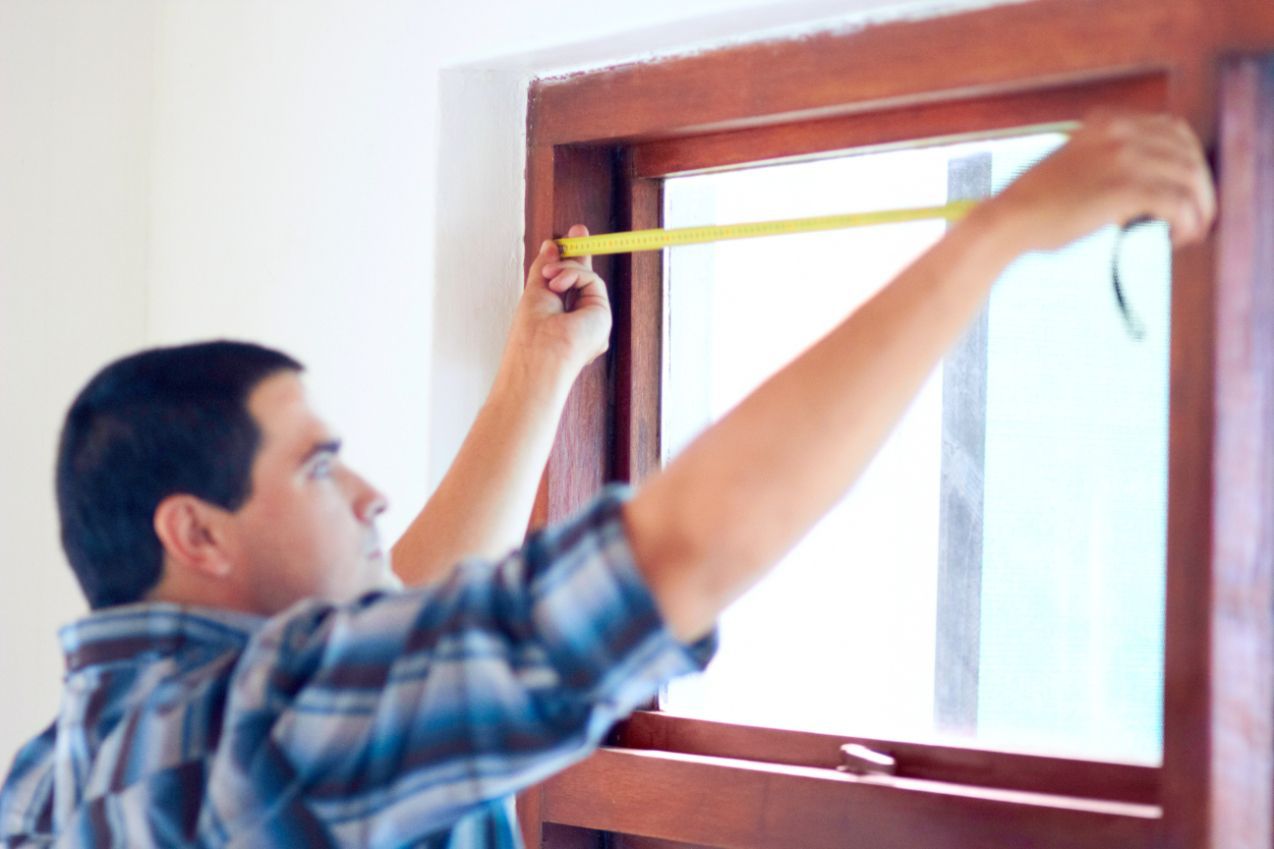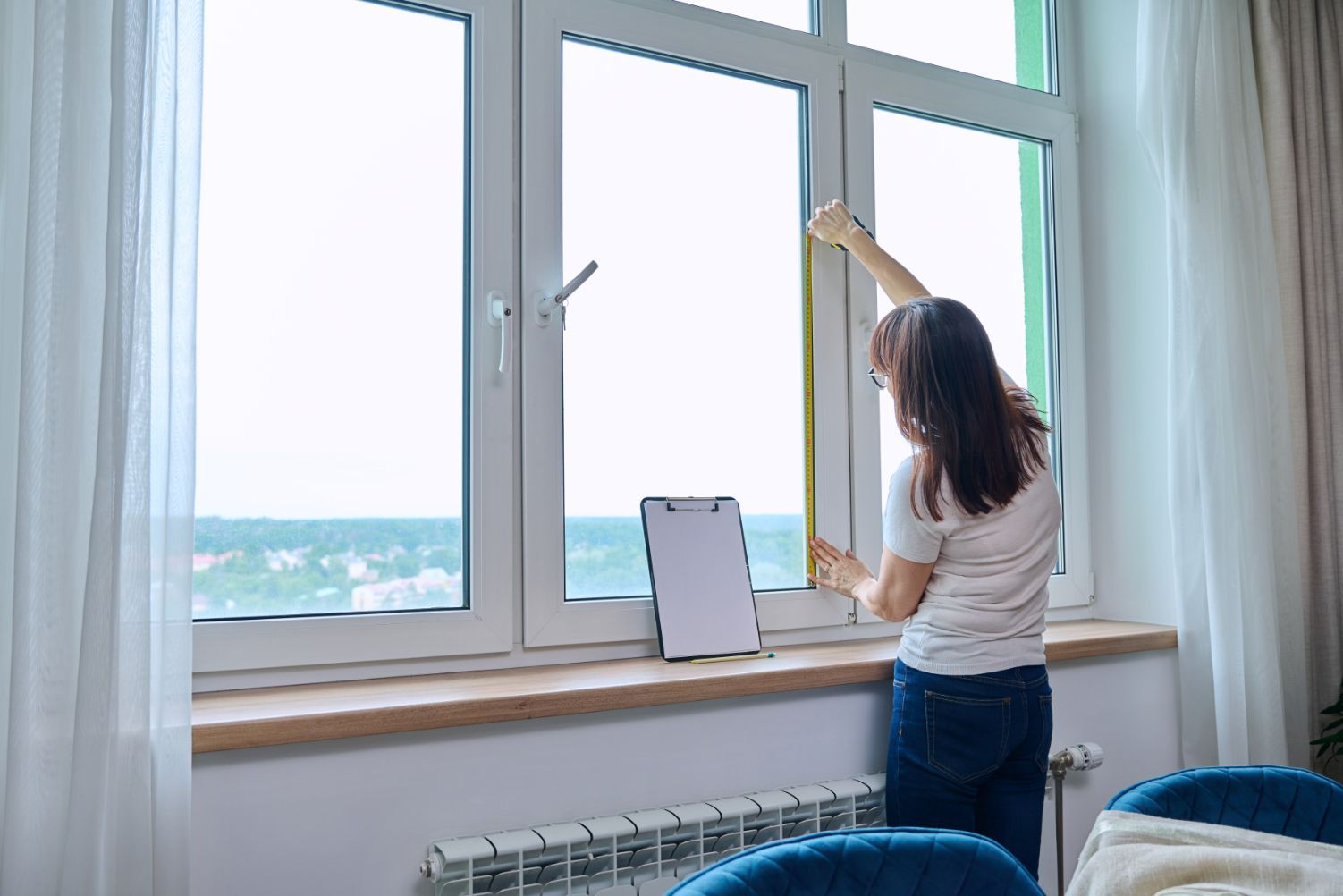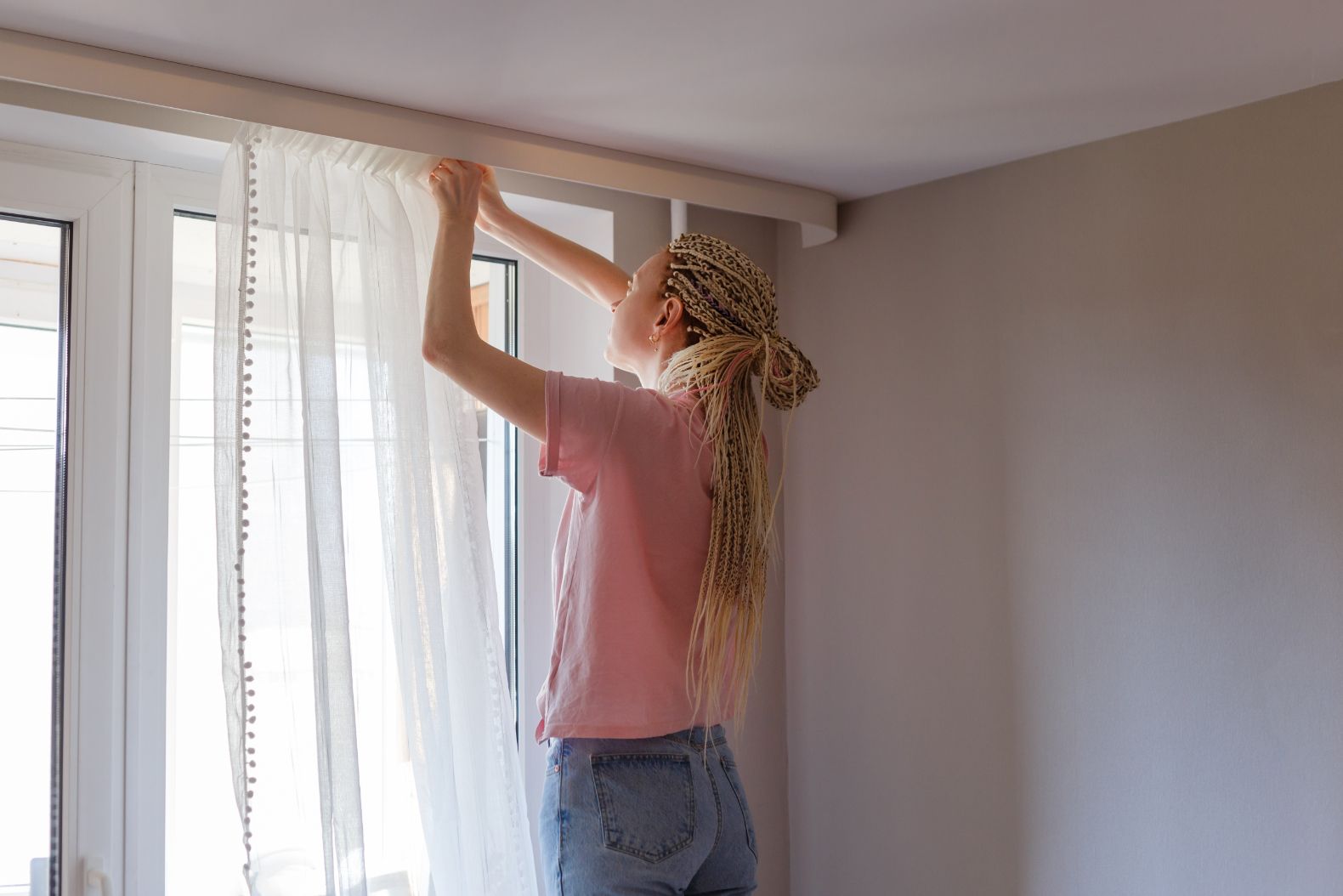How to Measure Windows for Drapery: Step-by-Step Video Guide
TLDR;
To measure windows for
drapery, first decide where you want your curtain rod installed, then measure the window width and add extra inches on each side for coverage and style. For the length, measure from the rod down to your desired endpoint such as the sill, floor, or puddle. Multiply your rod width by two to calculate the total drapery width for proper fullness.
Why Accurate Drapery Measurement Matters

Getting your drapery measurements right is the difference between polished, professional-looking windows and treatments that appear awkward.
Accurate measurements ensure:
- Full light coverage and privacy control
- Drapes that align with the design of your room
- Avoiding wasted fabric and extra costs
- Correct proportions between fabric, rod, and frame
Think of a window where the drapes ended a few inches short of the floor. The look is unfinished and the cost is wasted. At
Simply Windows, we’ve seen homeowners replace drapery panels because of small mistakes in measurement. Correct sizing avoids these issues from the start.
Tools and Preparation Before Measuring

You need reliable tools to ensure consistent results.
- Steel measuring tape: Rigid, accurate, and prevents sagging
- Ladder or step stool: Keeps your angle consistent
- Pencil and paper or digital notepad: Record each measurement clearly
- Level: Ensures your rod placement is straight
- Awareness of obstacles: Watch for molding, trim, or radiators that may affect how fabric hangs
Decide in advance whether you want an inside mount or outside mount. This choice changes how you measure.
Step-by-Step Measuring Instructions
Choose Mounting Type: Inside or Outside
Inside mount
- Drapes fit within the window frame
- Creates a clean, tailored look
- Reduces light blockage
Outside mount
- Drapes extend beyond the window frame
- Makes windows look larger
- Blocks more light when closed
Your choice affects both width and height. Inside mount requires exact frame dimensions. Outside mount gives you flexibility to extend coverage.
Measuring Window Width
Inside mount
- Measure the top, middle, and bottom of the window frame
- Record the narrowest measurement to ensure panels fit correctly
Outside mount
- Measure the full width of the window including trim
- Add 4 to 6 inches on each side for coverage and style
- This buffer prevents light leaks and gives fabric space to stack when open
Example: If your window frame is 50 inches wide, your final drapery width may need to be 58 to 62 inches.
Measuring Window Height or Length
Start from the rod or mount point and measure down to your chosen endpoint.
Options:
- Sill length: Ends at or slightly below the sill
- Floor length: Ends just above the floor for a crisp look
- Kiss length: Drapes touch the floor
- Puddle length: Drapes extend 4 to 6 inches onto the floor for a formal effect
Factor in header style:
- Grommet or tab top adds fabric height above the rod
- Pleats or rod pockets may shorten visible length
Always confirm how much fabric take-up each style creates.
Fullness, Overlap, and Stackback
Fullness refers to how much fabric you need beyond the window width. Drapery typically looks best at 1.5x to 2.5x the rod width.
Overlap means how panels meet in the center. A slight overlap ensures no light gap.
Stackback is the space drapes need on each side when fully open. If ignored, you risk blocking part of the glass.
Example: For a 100-inch rod, expect 20 inches of stackback space total, 10 inches on each side, depending on fabric weight.
Measuring for Special Window Types and Layouts
Bay Windows and Angled Walls
- Measure each section separately
- Use flexible rods or custom tracks
- Allow extra inches for corners so fabric moves freely
Sliding Glass Doors or Wide Expanses
- Extend the rod several inches past the frame for full clearance
- Choose heavy-duty rods to support fabric weight
Arched or Circular Windows
- Decide if you want to highlight or cover the shape
- For coverage, measure the widest point and longest drop
- For highlighting, mount above and frame the arch with outside-mount drapes
Windows with Obstacles
- Record any molding, radiators, or shutters that limit drape length
- Adjust measurements so fabric clears obstructions when opening or closing
Style and Fabric Considerations That Impact Measurements

- Header styles: Pinch pleats need more fabric, grommets hang lower, rod pockets shorten the visible drape
- Lining: Blackout or thermal lining adds thickness and changes fullness needs
- Fabric weight: Heavy velvet needs more stackback than lightweight linen
- Rod placement: Installing rods closer to the ceiling makes windows feel taller and more dramatic
Common Mistakes and How to Avoid Them
- Measuring only the glass instead of the entire frame
- Forgetting to include rod hardware and bracket space
- Underestimating how much space fullness and stackback require
- Taking measurements once instead of double-checking
- Treating each window the same when small variations exist
Every mistake costs time and money. Rechecking saves you from ordering panels that do not fit.
Ordering Tips and Pre-Order Checks
- Round your measurements up rather than down
- Communicate your chosen header style to the manufacturer
- Confirm rod bracket specifications before finalizing fabric width
- Order swatches of fabric if uncertain about weight or lining impact
- Leave one to two inches in drapery length for future adjustment
Installation and Adjustment Tips
- Test hang panels before permanent installation
- Adjust brackets to correct small leveling issues
- Train pleats by folding panels evenly and securing with fabric ties for a few days
- Maintain fabric shape by steaming and occasionally rehanging
When to Hire a Professional vs DIY
DIY works well for standard windows with straightforward rods. Professional help is recommended for:
- Bay or arched windows
- Very tall or wide installations
- Homes with high ceilings
- Expensive fabric you cannot risk miscutting
Professional installers bring precision tools and experience. This saves time and avoids costly mistakes.

